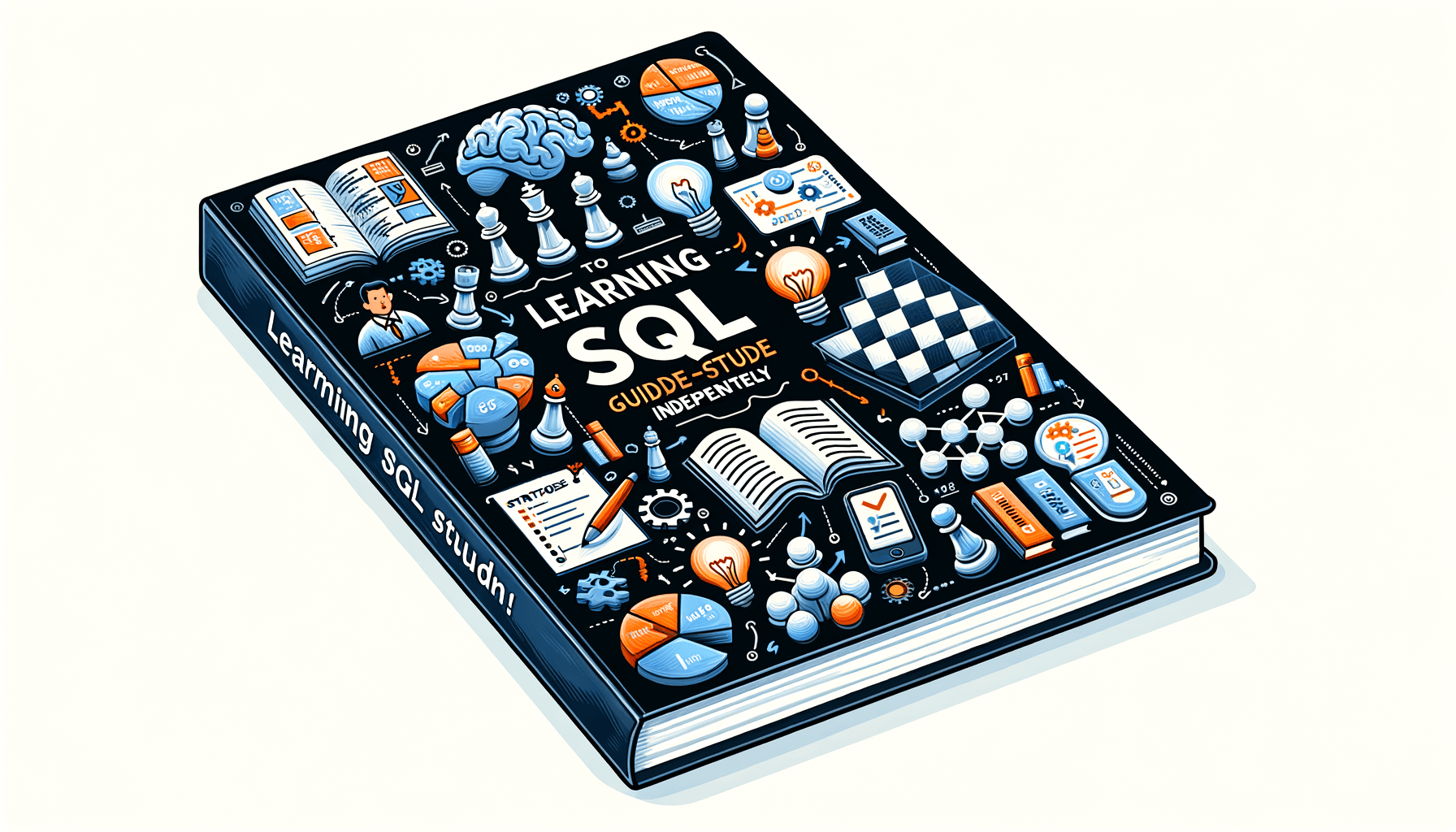A big variety of articles and resources

Mastering Data: A Comprehensive Guide on How to Learn SQL
 Sia Author and Instructor
Learn SQL
Sia Author and Instructor
Learn SQL
8 minute read
Understanding the Role of SQL in Data Science
In the evolving landscape of data science, SQL (Structured Query Language) emerges as an indispensable tool, bridging the gap between data storage and insightful analysis. This section delves into the pivotal role of SQL in data-driven decision-making processes and its ubiquitous application across various industries.
Getting Started with SQL
So... Let's dive right into it!
Setting Up Your SQL Environment
This comprehensive programming guide, which is meant to jump-start your SQL skills, provides you with the knowledge and assurance you require to become proficient in SQL and begin utilizing this useful programming language in a multitude of contexts. Setting up your SQL environment is the first step in your journey. You'll need to choose a database management system (DBMS) like MySQL, PostgreSQL, or SQLite, and install it on your computer. Each DBMS has its own installation process, but they generally follow these steps:
- Download the installer from the official website.
- Run the installer and follow the on-screen instructions.
- Configure the database server settings.
- Verify the installation by connecting to the database server.
Basic SQL Syntax and Commands
Once your environment is set up, it's time to learn the basic SQL syntax and commands. SQL, or Structured Query Language, is used to communicate with databases. The language is composed of various commands that allow you to perform different operations on the data. Here are some fundamental SQL commands:
- SELECT: Retrieves data from a database.
- INSERT: Adds new data to a database.
- UPDATE: Modifies existing data in a database.
- DELETE: Removes data from a database.
Understanding these basic commands will give you a solid foundation to build upon as you delve deeper into SQL.
First Steps in Writing SQL Queries
Now that you know the basic commands, you can start writing your first SQL queries. Writing queries involves specifying what data you want to retrieve and how you want to manipulate it. Here are some tips to get you started:
- Always start with a SELECT statement to specify the columns you want to retrieve.
- Use the FROM clause to specify the table from which to retrieve the data.
- Apply WHERE conditions to filter the data based on specific criteria.
- Use ORDER BY to sort the results.
Tip: Practice writing simple queries to become comfortable with the syntax and gradually move on to more complex queries.
By following these steps, you'll be well on your way to mastering SQL and unlocking its full potential in data management and analysis.
Mastering Basic SQL Operations
In the quest to unlock the immense power of data, mastering SQL is akin to discovering the first key. As a data scientist, understanding and implementing basic SQL operations pave the path to intricate data analysis and insights extraction. This segment delves into the core operations and techniques essential for data manipulation, offering a blend of theoretical insights and practical applications.
Advanced SQL Techniques for Data Analysis
Building upon foundational skills, this section delves into the sophisticated realms of SQL, unlocking techniques pivotal for in-depth data analysis and the extraction of nuanced insights. From the power of window functions to the strategic optimization of queries, we chart a path toward transforming raw data into predictive foresights.
Subqueries and Nested Queries
Subqueries and nested queries allow you to perform complex filtering and transformation operations within a single SQL statement. Mastering these techniques enables you to break down complicated problems into manageable parts, making your queries more efficient and easier to understand.
Window Functions and Their Uses
Window functions are particularly useful for predictive analysis and trend identification. They allow you to perform calculations across a set of table rows that are somehow related to the current row. Common applications include running totals, moving averages, and ranking. Here's a simple example:
SELECT employee_id, department_id, salary, RANK() OVER (PARTITION BY department_id ORDER BY salary DESC) as salary_rank FROM employees;
Optimizing SQL Queries for Performance
Query optimization is crucial for handling large datasets efficiently. Techniques include indexing, query rewriting, and using execution plans to identify bottlenecks. Tools like SQLPad can provide insights into performance issues, helping you refine your queries for better speed and resource management.
Effective query optimization can significantly reduce execution time and resource consumption, making your data analysis tasks more efficient.
Integrating SQL with Other Data Science Tools
SQL and Python Integration
SQL integrates seamlessly with Python, allowing data scientists to leverage the strengths of both tools. By using libraries such as pandas and SQLAlchemy, you can execute SQL queries directly within your Python scripts. This integration enhances data manipulation and analysis capabilities, making it easier to handle large datasets and perform complex operations. Mastering this integration can significantly boost your efficiency in data-driven projects.
Using SQL with R for Data Analysis
R, known for its statistical computing power, pairs well with SQL for data analysis tasks. By using packages like sqldf, you can run SQL queries on data frames within R. This combination allows for efficient data manipulation and advanced statistical analysis, providing a robust framework for data science projects. Understanding how to leverage SQL in conjunction with these big data technologies allows data scientists to tackle complex data challenges at scale.
Leveraging SQL in Big Data Environments
In the realm of big data, SQL remains a crucial tool. Technologies such as Hadoop and Spark support SQL-like querying, enabling data scientists to process and analyze vast amounts of data efficiently. This synergy between SQL and big data technologies enhances the ability to derive insights from large datasets, making SQL an indispensable tool in the big data landscape. For insights into integrating SQL with Spark, consider exploring Apache Spark's official documentation.
By mastering the interplay between SQL and these programming languages, data scientists can execute more sophisticated analyses and automate data processes, significantly enhancing their project outcomes.
Strategies for Effective SQL Learning
Practical Exercises and Projects
Engaging in practical exercises and building projects are essential for mastering SQL. Interactive tutorials and real-world datasets can significantly enhance your learning experience. Teaching SQL concepts to others can also reinforce your understanding and skills.
Online Courses and Resources
Continuous learning is pivotal in keeping up with the evolving SQL landscape. Enroll in online courses on platforms like Coursera and Udemy, which offer advanced SQL courses covering new features and optimization techniques. Websites like [sqlskillz.com vs. datacamp.com](https://sqlskillz.com) are perfect for beginners to master SQL basics at their own pace.
Building a SQL Portfolio
Creating a portfolio of SQL projects can showcase your skills to potential employers. Participate in SQL challenges on websites like HackerRank and LeetCode to sharpen your query writing skills. Engaging in community forums such as Stack Overflow or Reddit's SQL community can provide insights into real-world problems and innovative solutions.
The key to mastery is practice. Try to incorporate SQL queries into your daily or weekly routine. Use tools like SQLPad for regular practice.
Mastering SQL can open up numerous career opportunities and enhance your technical skills. To get started on your journey to becoming a SQL specialist, visit our website and explore our comprehensive courses designed by industry experts. Don't miss out on the chance to advance your knowledge and career prospects.
Conclusion
Mastering SQL is a pivotal step in advancing your data science career. This comprehensive guide has walked you through the essential aspects of SQL, from understanding its role in data science to mastering basic and advanced operations. By implementing the strategies discussed, you can enhance your SQL skills and leverage them for substantial career growth. Remember, while SQL is a foundational tool, continuous learning and expanding your skill set in areas like statistical analysis, machine learning, and programming languages are equally important. Stay committed to your learning journey, and you'll find yourself well-equipped to navigate the dynamic landscape of data science.
Frequently Asked Questions
Can mastering SQL alone guarantee success in a data science career?
While mastering SQL is crucial, success in data science also depends on proficiency in statistical analysis, machine learning, programming languages like Python or R, and domain knowledge. SQL is a foundation, but a broad skill set is essential.
What are some effective strategies for learning SQL?
Effective strategies for learning SQL include practical exercises, working on real-world projects, taking online courses, and regularly practicing by writing and optimizing queries.
How long does it take to learn SQL?
The time it takes to learn SQL varies depending on your background and the amount of time you dedicate to studying. Generally, with consistent effort, you can learn the basics in a few weeks, but mastering more advanced concepts may take several months.
Is SQL relevant for big data environments?
Yes, SQL is highly relevant for big data environments. Many big data technologies, like Apache Hive and Google BigQuery, use SQL or SQL-like query languages to manage and analyze large datasets.
Can I integrate SQL with other programming languages?
Absolutely! SQL can be integrated with various programming languages such as Python, R, and Java. This integration is often used to enhance data analysis, machine learning, and application development.
What are CRUD operations in SQL?
CRUD stands for Create, Read, Update, and Delete. These are the four basic operations that you can perform on a database using SQL. They are essential for managing and manipulating data effectively.
Related Articles

Master SQL Effortlessly: The Easy Way to Learn SQL
9 minute read




